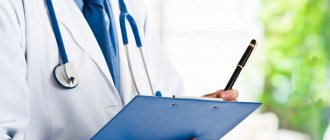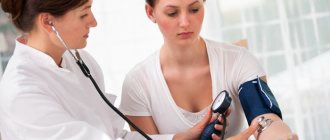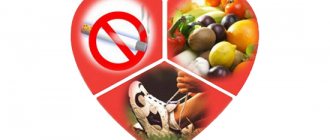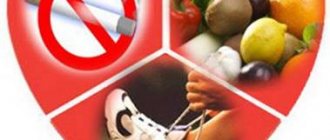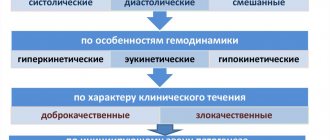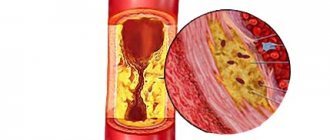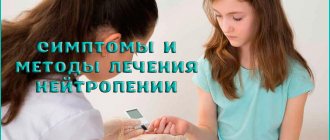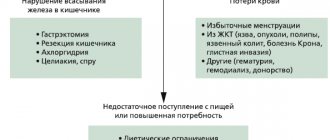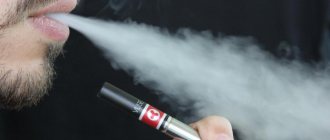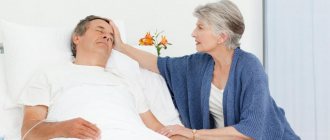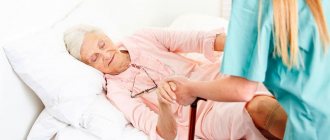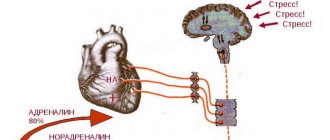A recurrent stroke is an acute disturbance of cerebral hemodynamics that occurs within a year or more after the first attack.
According to statistics, every year per 100 thousand of the planet's population, 1/3 of hospitalizations are diagnosed with recurrent stroke. Mortality after a secondary attack increases significantly: if after the first episode 60 - 70% survive, then after the second only 30%.
Attention. Disability after a second blow ranks first.
Almost 1/3 of relapses are observed during the first year after the first attack. The rest of the patients live 8-10 years. After the third episode, 20% of patients die within the first month. The risk of a recurrence of the attack increases in older people.
Statistics data
In 70% of cases of recurrent stroke, patients have a fatal outcome. Patients who have had a stroke over the age of 45 are 15 times more likely to have another stroke. 30% of relapses occur in the first year after therapy.
About 500,000 cases of stroke are recorded annually in Russia. 85% are ischemic in nature, and 15% are hemorrhagic.
The number of recurrent strokes increases every year. Last year, the number of relapses was more than 1/3 of the total number recorded. Experts compare these data with stress loads, worsening environmental conditions and the overall quality of life.
The importance of proper nutrition
The patient needs to follow a daily routine and eat right. After the first stroke, the patient should avoid the following foods:
- Liver.
- Confectionery.
- Hot spices.
- Sausages.
In order to reduce the likelihood of a recurrent stroke, you need to include vegetables, seaweed, fruits, and low-fat fermented milk products in your daily menu.
What other recommendations should you follow?
Many patients would like to know the answer to the question: how to avoid another stroke? First of all, the patient needs to spend a lot of time in the fresh air and do therapeutic exercises. Heavy sports activities are unacceptable in his condition. It is recommended to perform physical exercises under the supervision of a physical therapy instructor. It is recommended to measure your blood pressure daily. It must be remembered that it is impossible to sharply reduce blood pressure. You must take medications strictly as prescribed by your doctor. You can also use folk remedies:
- 10 grams of celandine are poured into 200 ml of boiling water.
- It is recommended to leave the product for 2 hours.
- After this time, the resulting mixture must be filtered.
- You need to drink 10 ml of the product 3 times a day.
Celandine is a poisonous plant, so the indicated dosage should not be exceeded. The duration of treatment varies from 14 days to two months.
Medications to prevent recurrent stroke
All medications must be prescribed by a doctor. For the treatment of chronic cerebral vascular ischemia, medications such as Trental and Cavinton are usually prescribed. These medications help prevent the development of thrombosis.
Read also: Devices after a stroke
Many experts recommend taking aspirin to reduce the likelihood of another stroke. But if the patient has chronic diseases of the digestive organs, you should stop using this medication.
Spa treatment
As is known, repeated stroke causes serious consequences. Therefore, relatives must take care of the patient. A stroke survivor needs positive emotions. He needs to avoid stress; the patient is indicated for treatment in a rehabilitation center. It is best to undergo a therapeutic course in cardiological sanatoriums. A trip to another country is disastrous for the patient, so priority should be given to Russian medical institutions.
Causes
The main reason for half of recurrent strokes is patients’ neglect of their health. When a patient undergoes a course of therapy and rehabilitation after the first stroke, there is a feeling of complete recovery and restoration of their usual way of life.
We list the main factors that provoke a stroke:
- Insufficient physical activity.
- Obesity.
- Metabolic processes deteriorate.
- Regular stress.
- Sleep problems.
- Increase in cholesterol levels.
- The patient eats a lot of animal fats.
- Problems with rest and work schedule.
Severe weather sensitivity can cause a recurrent stroke. Prerequisites for relapse occur when the medication regimen is violated. Statistically, recurrent stroke occurs in every 3rd patient. In most examples, this condition is far from healthy.
Vascular tone problems:
- A previous stroke is a direct indication for vascular diagnostics. Aneurysms that form on the walls of veins and arteries are dangerous. Hemorrhage occurs as a result of rupture of such capsules.
- To identify an aneurysm, an angiographic examination of the vessels of the head is required; if they are identified, emergency removal is provided.
- The danger involves the appearance of atherosclerotic plaques that reduce the internal diameter of blood vessels. This increases the pressure on the walls of the arteries, causing problems with the blood supply to certain areas of the brain.
- As a result, the brain is poorly supplied with blood and oxygen starvation occurs.
Blood pressure problems:
- The first signs of ischemic stroke appear after an increase in blood pressure. A slight increase in stroke can provoke a recurrent stroke.
- The patient is advised to prevent hypertension and select medications to lower blood pressure.
The problem of the working season in gardens and dachas:
- Such events can be fraught with danger for old people who once experienced a stroke.
- During the first stages of the summer season there is a surge in the first recurrent strokes. Prolonged work in an uncomfortable position under the hot sun causes dehydration and provokes a brain stroke.
Heart monitoring:
- The appearance of blood clots in the heart arteries is many times more dangerous after the first stroke. If a small piece of tissue breaks away from the blood clot, there is a possibility of blockage of the blood vessels in the head.
- Experts advise performing echocardiography after a stroke.
- For prevention, patients are prescribed blood thinners.
Infectious disorders:
- The main cause of recurrent stroke in children is infection. Therefore, it is necessary to conduct an examination by a specialist of the appropriate profile after an attack.
- If you provide your child with timely help, you will be able to save yourself from relapse.
Forecast
In patients who have suffered an episode of stroke, pathologies are detected - arterial hypertension (87% of cases), atherosclerosis of cerebral and extracranial vessels (84% of cases), which are associated with a high risk of relapse. In 23% of patients who were subsequently diagnosed with a second and third stroke, atrial fibrillation was previously detected, and in 22% of patients - diabetes mellitus. Other heart pathologies that correlate with the development of relapse:
- Heart failure occurring in a chronic form (59% of cases).
- Heart disease of ischemic origin (33% of cases).
- Heart defects (14% of cases).
- Prolapse (protrusion of the valve leaflets into the cavity of the left atrium during systole) of the mitral valve (12% of cases).
- Endocarditis of infectious origin (3% of cases).
Rarely (2% of cases) in people who have suffered repeated episodes of stroke, a history of a procedure for replacing heart valves - mitral, aortic - is revealed. Statistics show that in patients predisposed to a second stroke, in 74% of cases the focus of cerebral infarction is located in the carotid area, in 26% of cases - in the vertebrobasilar area.
The prognosis for life after an acute stroke episode is compiled individually - the results of long-term (about 10 years) observation of a group of patients show that the occurrence of a second or third stroke is not influenced by factors such as the patient’s gender and the duration of outpatient observation. According to research results, the occurrence of relapse is influenced, but not decisively, by such factors as the presence of a history and the severity of pathologies:
- Atherosclerosis affecting the brachiocephalic arteries.
- Heart failure occurring in a chronic form.
- Arterial hypertension.
- Atrial fibrillation.
- Heart defects.
- Diabetes.
To prevent recurrent stroke, it is important to know prognostic criteria that determine a high probability of recurrence. Correcting leading risk factors increases the likelihood that the patient will be able to avoid consequences such as a second stroke and will live longer. Unfavorable prognostic criteria:
- Age over 67 years.
- Multiple foci of damage to cerebral vessels.
- History of ischemic heart disease.
- Supraventricular extrasystole (variant of arrhythmia).
- Ventricular arrhythmia (irregular heart rhythm).
- Bradyarrhythmia (a variant of heart rhythm disturbance).
In the course of research, scientists found that taking thiazide diuretics on an ongoing basis as part of antihypertensive therapy is associated with a decrease in the likelihood of cerebral complications, which include 2 and 3 strokes. Old age is a non-modifiable factor that increases the risk of relapse, which is explained by an increase in the number of diseases that correlate with the aging process.
Regardless of the availability of correct pharmaceutical therapy, diseases such as cardiac pathologies and atherosclerosis progress. The inevitable effect of chronic arterial hypertension is the progression of remodeling (structural and geometric changes) of the heart and cardiovascular system.
Multiple foci of damage to the brain substance are also an unfavorable non-modifiable factor that affects the period of life after the first or second stroke. Multifocal damage to brain tissue indicates numerous episodes of cerebral blood flow disturbance, including asymptomatic ones.
The following factors are involved in the pathogenesis of repeated episodes of stroke: deformation and atherosclerotic damage of large arteries, increased rigidity of the vascular wall, dysfunction of the vascular endothelium. The clinical picture of heart disease of ischemic origin indicates atherosclerosis of the coronary arteries (providing blood supply to the myocardium).
A stable clinical picture of coronary heart disease, despite apparent well-being, is associated with an increased risk of atherothrombosis (the process of blood clots in the area of vascular walls). Moreover, the process of blood clot formation affects the arteries of different basins - coronary, cerebral, located in the peripheral circulatory system.
In turn, atherothrombosis is a leading factor in the pathogenesis of stroke of cardioembolic and atherothrombotic etiology. An increase in supraventricular extrasystole indicators reflects the instability of the bioelectrical regulation of the myocardium in the left atrium, which is associated with an increased likelihood of developing attacks of atrial fibrillation (atrial fibrillation), including asymptomatic episodes.
In turn, attacks of atrial fibrillation provoke the development of an episode of cardioembolic stroke. In patients with ventricular extrasystole, the likelihood of developing transient ischemic strokes is higher; this is a variant of the pathology that is characterized by multiple repetitions of cerebral episodes, which worsens the prognosis.
The pathogenesis involves frequent reflux of blood into the atrium, caused by ventricular extrasystole, which leads to cardiac remodeling and an increase in the number of attacks of atrial fibrillation. Such violations lead to a condition where a person can have a stroke as many times as doctors provide timely assistance and eliminate the threat to life.
First aid - video
When health deteriorates and a stroke begins, the disorder can be prevented if the patient is promptly taken to fresh air. A person needs to go out onto the balcony and take deep breaths. The cause of the emerging crisis will have to be determined over time .
If the signs are obvious, the patient should take a horizontal position on the bed or on the ground. If a person loses consciousness, you need to shift him to his side. Take off your tie or unbutton your collar to allow easier breathing.
If your blood pressure is high, you need to lower it. You can use water and aspirin. It is necessary to use drugs that the patient took before. If a stroke recurs, you need to call a doctor who will provide the necessary assistance before hospitalization; maintaining the functioning of the heart and respiratory organs is required.
When the patient is taken to the hospital, the causes of the second stroke are determined, an ECG, MRI are performed, blood is taken for analysis, and other types of examination are performed. Angiography can be performed to identify aneurysms and remove them surgically.
Stages
The development of a recurrent stroke goes through the following stages, presented in the table:
| Stage name | Term |
| 1. Acute | First 24 hours |
| 2. Spicy | 24 hours – 3 weeks |
| 3. Subacute | 3 weeks – 3 months |
| 4. Early recovery | 3 – 6 months |
| 5. Late recovery | 6 months – year |
| 6. Stage of long-term consequences | One year after relapse |
Clinic by stages
For reference. On the first day of ischemic cerebral infarction, a person suddenly experiences dizziness and nausea, often turning into vomiting. The patient is stunned or, conversely, excited. He is temporarily derealized and does not understand where he is.
One side is partially (hemiparesis) or completely (paralysis) paralyzed. Movement is limited or completely impossible. Your temperature may rise. Facial asymmetry is observed (drooping of the corner of the mouth, inability to close the eye on the side opposite to the lesion). There is numbness in the limbs of the affected side and face. Convulsions are possible.
If the left side is affected, speech is impaired. The patient has poor hearing and vision deteriorates to the point of blindness.
If the stroke is hemorrhagic, the initial symptoms are as follows:
- sharp sudden cephalalgia;
- loss of consciousness, which often ends in coma;
- hyperemia of the skin;
- profuse sweating;
- a sharp increase in A/D to high numbers;
- tachycardia;
- anisocoria (pupils of different sizes), nystagmus (twitching of the eyeballs);
- facial asymmetry;
- lack of coordination;
- muscle hypotonia on one side;
- urinary incontinence;
- seizures of the epileptic type.
In almost all cases, swallowing is difficult. If the breathing and circulatory centers are affected, death occurs.
For reference. In the acute stage, the ischemic focus is localized and neurological symptoms increase. With the hemorrhagic variant, various types of impairment of consciousness are possible (from stunning to coma).
The degrees of post-stroke coma according to Glasgow are presented in the table:
| Severity | Symptoms | Forecast |
| First | The patient is drowsy, his reactions are inhibited, and he does not react acutely to pain. Contact is difficult to reach. The swallowing reflex is preserved. The patient can independently roll over in a lying position and perform simple movements. The pupils react to light. | Favorable, minimal complications. |
| Second | Does not make contact, state of stupor. Rare chaotic muscle contractions are observed. Involuntary physiological effects. Swallowing reflexes are preserved. The pupils are strongly constricted and almost do not react to light. Breathing is pathological, noisy, characteristic of cerebral hypoxia. | Survival is unlikely. |
| Third (atonic) | The patient is unconscious. There is no reaction to light or pain at all. Pharyngeal reflexes are very weak. Hypotension. Hyperthermia. The breathing rhythm is disturbed. | The probability of survival is close to zero. |
| Fourth | The patient shows no signs of life, breathing may stop every second. | No chance. |
| Fifth | Agony and death |
Mortality occurs on days 2–4 or on days 10–12 (if complications develop).
In the subacute stage, the process does not worsen. It is either stable, without changes, or is slowly improving. Then, with proper treatment and compliance with rehabilitation measures, an early and late rehabilitation period begins. After a year, long-term consequences are recorded.
First aid
Attention. The effectiveness of treatment primarily depends on the time of first aid and the professionalism of the team. The sooner others call an ambulance, the greater the chance of promptly localizing the lesion and stopping the rapidly developing hypoxia and neuronal necrosis.
When the first signs of secondary cerebral infarction occur, you must:
- Call an ambulance.
- Lay the patient down with the head elevated.
- Measure A/D and give an antihypertensive drug, if available.
- Carefully remove dentures, contact lenses, unfasten the collar, loosen the belt, remove watches and glasses.
- If a patient loses consciousness, you should not try to revive him. You need to turn your head to the side, open your mouth slightly so that the tongue does not fall in to avoid asphyxia.
- Place a cold compress or ice on your forehead.
Consequences of the second attack
After a stroke, patients have to deal with problems with insufficient motor activity. Deterioration in muscle sensitivity on the left or right after a stroke is observed in many patients. After the 2nd or 3rd attack the problems get worse. Problems with thinking appear, memory deteriorates, and the patient speaks poorly . Patients find it difficult to control bowel movements and require individualized, regular care.
Paralysis appears depending on the location of the hemorrhage. If a stroke occurs in the right hemisphere, the left side of the body becomes numb, problems with vision and hearing appear, and smells are not recognized. It becomes difficult for the patient to swallow, all patients are depressed. Other people feel angry and their mood worsens.
Patients become isolated and move away from loved ones. Without communication, appetite worsens and apathy appears. In difficult situations with wide areas of damage, patients fall into a coma and spend years in intensive care. In 70% of cases, death is recorded without return to consciousness.
Rehabilitation
For reference. Rehabilitation measures begin from the second to third week from the onset of the secondary attack.
They include a set of special exercises to restore paralyzed limbs, physiotherapy, massage, and diet. They are carried out by a specialist in a hospital in the presence of relatives, who subsequently, after completing physiotherapeutic procedures, do the same at home.
If the patient is alone, or his relatives are unable to provide him with proper care, he undergoes a course in specialized centers.
For reference. 50% of self-care skills, motor and cognitive functions are restored during the first 2-3 months, the remaining half by the end of the year.
Physiotherapy helps improve metabolism, nutrition of cerebral vessels, reduce ischemia, and increase motor activity. The procedures reduce A/D, thrombus formation, and normalize blood composition. Physiotherapy is prescribed already in the acute period with the goal of reducing muscle hypertonicity; in hemorrhagic cases, 2 months after the onset of relapse.
Exercise therapy begins after the patient’s condition has stabilized. The limbs are fixed in a physiological position - the hand is opened, the fingers and foot are extended, the leg is bent at the knee. The patient is given special exercises to strengthen muscles and improve microcirculation in paralyzed limbs. Repeat them several times a day. Massages are provided daily.
Diet. The result of rehabilitation measures will be reduced if you do not adhere to a special diet aimed at reducing cholesterol, high-density lipids, and eliminating fatty, salty, fried, smoked, and baked goods. Food should be taken in small portions, 5-6 times a day.
Attention. Rehabilitation after a second stroke is long. Full recovery is unlikely. The result depends on the qualifications of the medical staff, the patient’s faith in improving his condition, and the enormous efforts of those around him.
Exercise stress
Regular walks of at least half an hour are required for everyone. Prevention to prevent a second stroke continues regularly , for years and for months under the supervision of a specialist. Recurrent stroke occurs frequently in patients over 45 years of age. With age, the likelihood of death after a second stroke increases. Doctors always give a disappointing prognosis.
Full recovery is possible in 10% of patients . In most cases, the second stroke occurs within a year of the first attack. The first stroke causes damage to the vessels of the head and nerve tissues; if the patient does not change his lifestyle, the likelihood of a second stroke increases.
Recovery
After a second attack, it is necessary to focus on the rehabilitation and recovery of the patient.
Recovery measures include:
- blood pressure control, atrial arrhythmia control, irregular heartbeat control;
- eating foods low in sodium (salt) and low in fat;
- blood circulation monitoring and necessary consultations with your doctor;
- diabetes management (if available);
- cholesterol monitoring;
- limiting alcohol intake;
- to give up smoking;
- frequent exercise.
Poor blood circulation in the brain leads to stroke. What causes stroke and who is at risk?
Read here how to restore basic body functions after a stroke.
Types of speech disorders after a stroke are described in this topic. Types of aphasia and methods of restoring speech function.
What are the risks of having another stroke?
Signs of a transient attack indicate that blood clots may be developing in the body. The mechanism of stroke occurs when blood vessels are blocked or after the formation of a dense atherosclerotic plaque. Spasm and a sharp increase in pressure can provoke a stroke. A heart attack often occurs due to nervous tension. If you drink alcohol and smoke, the walls of blood vessels will be destroyed.
Atherosclerosis progresses with insufficient physical activity and poor diet in youth.
Stroke occurs due to increased physical activity. This often happens to older citizens. It must be remembered that after the first ischemic attack, the body’s resources are reduced, so you need to work in moderation and rest more often.
Intellectual overstrain requires an increase in the flow of oxygen to the nervous system; the body's resources will noticeably decrease after the first stroke. Intensive work with the head, the body perceives this as stress . Blood pressure may rise. This increases the likelihood of another heart attack.
Diagnostics and prevention
If an illness such as a stroke recurs, the outcome of the situation depends only on the speed of action of the people around the patient. If a repeated attack occurs, you should know that its symptoms will completely coincide with those signs that accompany the initial attack. As a rule, the patient experiences nausea and noticeable dizziness. In addition, a person may feel severe weakness, his speech and vision will deteriorate, and part of his face will recede. To help a person, you should not look for manifestations of all these symptoms; it is enough to detect at least one similarity. The assistant’s main task is to sit the patient up or give him a horizontal position, which will allow the pressure to be measured. If this indicator exceeds 160 mmHg. Art., you shouldn’t delay, you need to call an ambulance.
What should patients at risk do?
The risk group includes patients after a stroke. Patients with transient attacks also fall into this category. To prevent relapse, you will have to contact a neurologist. To adjust treatment, a repeat diagnostic procedure is required: ultrasound of the carotid arteries, echocardiogram, ECG, lipid profile analysis, coagulogram, determination of the amount of homocysteine. As it increases, the likelihood of blood clots increases. The likelihood of a stroke increases by 6-8 times.
In Russia, blood is rarely tested for homocysteine. But doctors recommend taking care of yourself and conducting such an analysis. Timely treatment can prevent stroke.
Diet
Consider tips for adjusting your diet:
- Junk food should be excluded from the diet. These products include: sweets, smoked food, meat with fat, fish products, liver of various animals, eggs.
- You need to eat more fruits, take vitamins and minerals. Vegetable salads with vegetable oil maintain optimal cholesterol concentrations.
- Legumes or eggplants help lower cholesterol levels and provide the body with essential plant proteins.
The patient needs to get enough sleep and breathe fresh air more often. If you walk every day, your blood will be saturated with oxygen, your mood will improve, and blood circulation in your nervous system will be stimulated. The rheological quality of blood improves with frequent movement.
Minimal signs of a stroke should not be ignored. If you hospitalize a patient immediately after an attack, you can prevent complex consequences and it will be easier to resume brain function.
